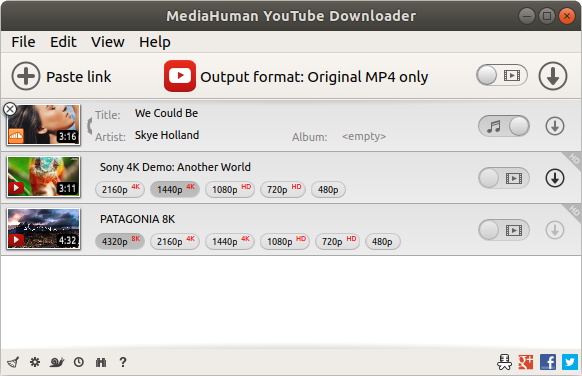Ubuntu Dmg
Step 1 – Make a Ubuntu bootable USB stick while running Mac OS This is simple – follow the instructions here. Note that step 3 is not very well described – you will end up with a file called “ubuntu.img.dmg” that you will need to rename “ubuntu.img” by just renaming the file in the Mac OS finder. How to write a USB stick with macOS.
This guide covers the verbatim copying of a DMG image to a USB thumb drive using only Linux (no need to find a Mac). If the DMG was intended to be bootable then the resulting USB will be bootable.
Convert to ISO
Linux doesn’t much care for DMG files. Sure, it’ll play nice with them. But we don’t just want to play nice. We want to copy a DMG image to a USB drive and keep it as verbatim as computationally possible. In order to do this, we’re first going to convert the image to a format that’s a little more universal: ISO.
We’re going to use dmg2img to convert the DMG to an ISO image. If you already have dmg2img, great. If not, install it using your distribution’s native package management system.
On Ubuntu, you’d do it like this:
Once you have dmg2img installed, begin converting the DMG file:
After a few minutes, you should have a second file called image.img. This file can be used like an ISO. All we have to do is change the extension. Use mv to do this:
Make sure you specified “image.img” and not “image.dmg”! Working with three different file extensions can get kind of confusing.
Ok, so we should now have a file called “image.iso” which is just “image.img” with a different extension.
Now we want to write “image.iso” to our USB drive. I used “lsblk” to figure out how the system was identifying my drive. The lsblk command lists all disks connected to the system. It’s usually pretty easy to figure out which disk is which based on their size. Just be sure you’re sure. This process is going to overwrite the target disk with the contents of our DMG image file. Any preexisting files on the target disk will be lost. As usual, make sure you have a proper backup.
Make sure the target drive isn’t mounted. Unmount the drive with your distribution’s GUI.
Ubuntu Open Dmg

Or you could just unmount it from the terminal:
Most systems seem to mount external drives in /media. Sometimes the drive might be mounted in /mnt or elsewhere.
Write the ISO image to the USB drive like this:
Ubuntu Dmg Download
Replace “X” with the appropriate letter. For example “/dev/sdb”. Be sure to use the drive directly and not a partition within the drive. For example, don’t use “/dev/sdb1”.
This will probably take a little while to complete. I’m using a Kingston DataTraveler DTSE9 and it took about 24 minutes 30 seconds to write 4.9GB.
Your new USB stick should now be bootable, assuming that was the intended purpose of the DMG.
Contents
|
DMG2IMG is an Apple's compressed dmg to standard (hfsplus) image disk file convert tool. It is derived from dmg2iso v0.2c by vu1tur.
It will allow you to convert a DMG file into an IMG file that can be mounted as described in ManageDiscImages.
Ubuntu Dmg Extract
Website: http://vu1tur.eu.org/tools/
Linux Dmg File
The tool is in the Universe repository for Lucid:
sudo apt-get install dmg2img
Install from .deb on Karmic
The Lucid package works fine with Karmic. Download and install it from here: http://packages.ubuntu.com/lucid/dmg2img.
Cleaner, you can also lock some files that you don’t want to remove in case you want to make sure you do not delete important files.5. However, no functions like this can be found in CleanMyMac.Disk Map quickly scans your drive and builds an amazing visualization of all the files and folders on your computer, allowing you to easily navigate the system and find the content that takes up the most space.In addition, all folders and files under the home folder are listed out by size. Good cache cleaner for mac computers. Disk MapWe think it is user-friendly to help you manage all the files on your hard disk using a visual map, so we added the Disk Map feature into Dr. Cleaner for free.
Install from PPA
There is also a PPA at https://launchpad.net/~rzr/+archive/ppa.
Install from source
The following assumes the latest version is 1.6.2, so check if a more recent version is available here first. To download, compile and install, open an terminal and type:
You can now remove the installation files if you want to tidy up:
You can now convert .dmg files to .img by typing:

This will create a file called filename.img